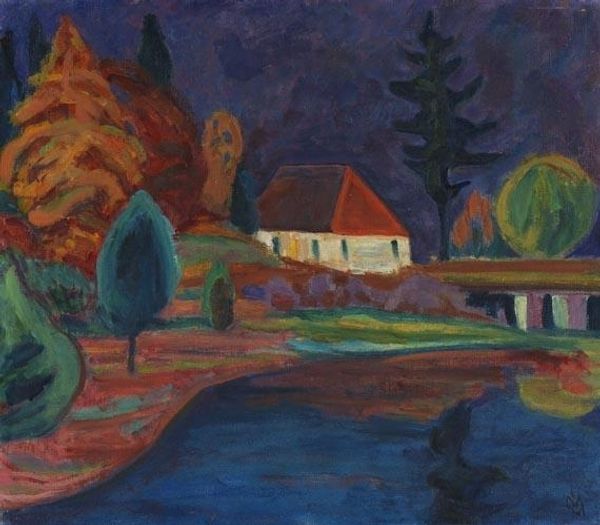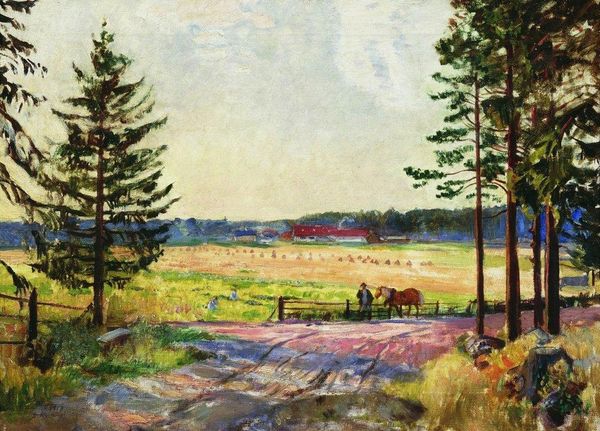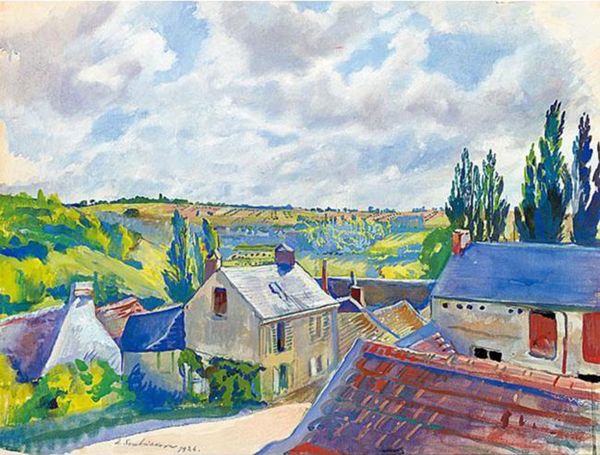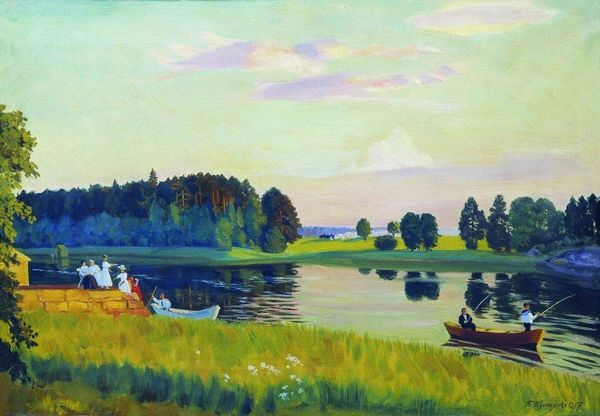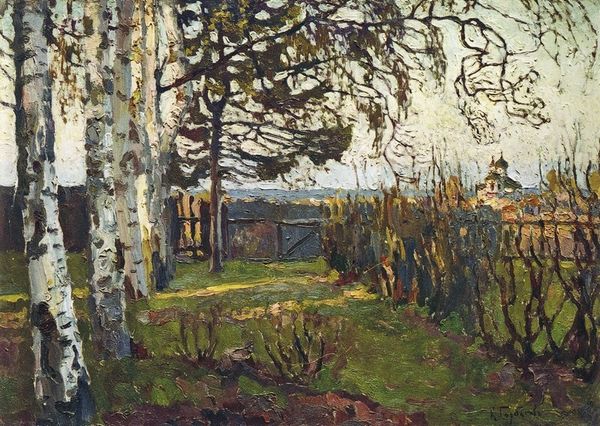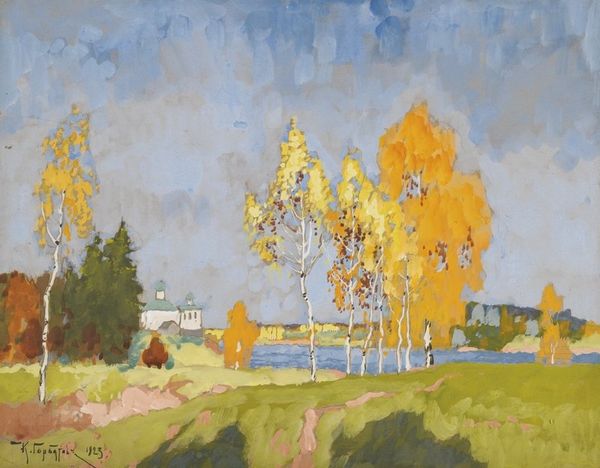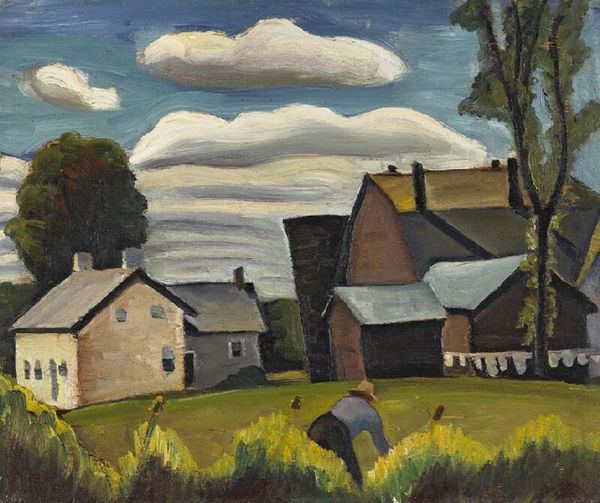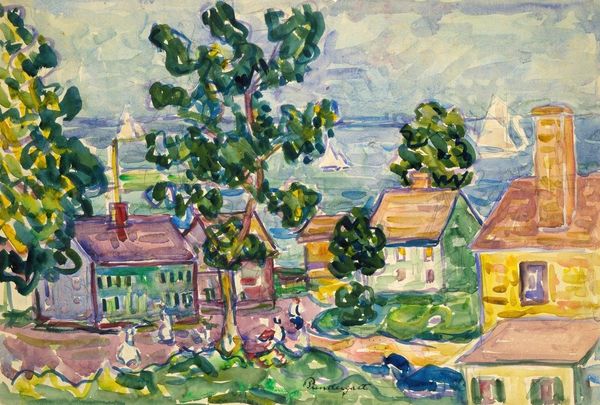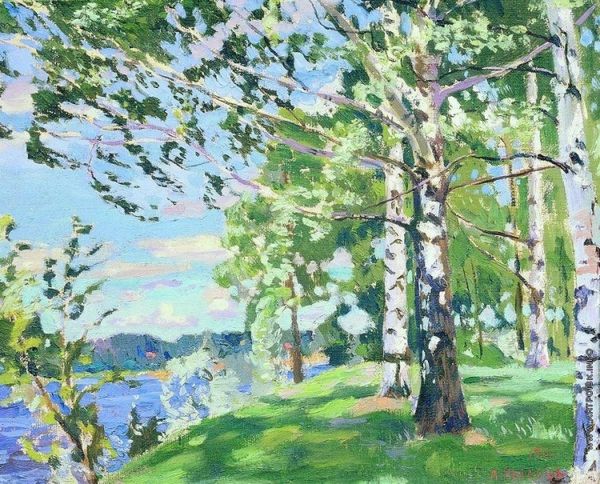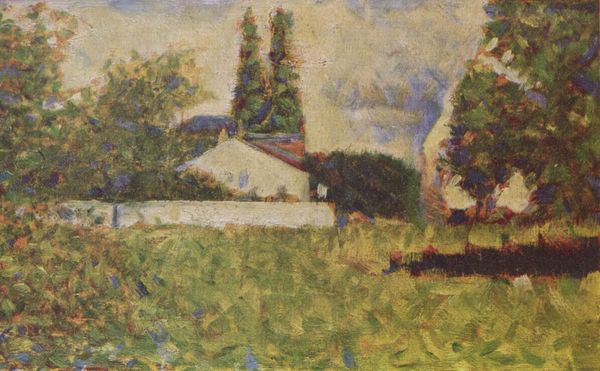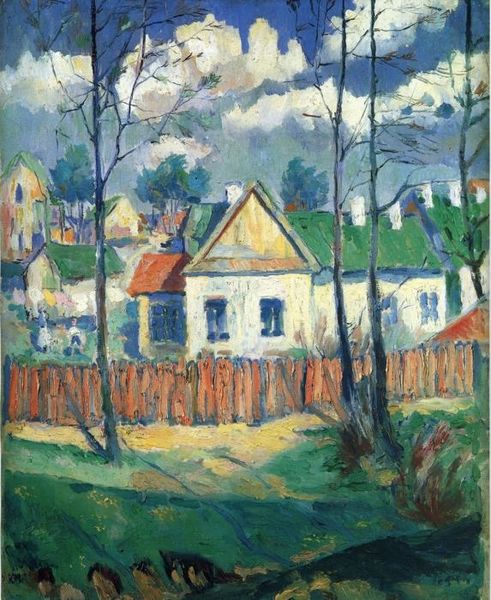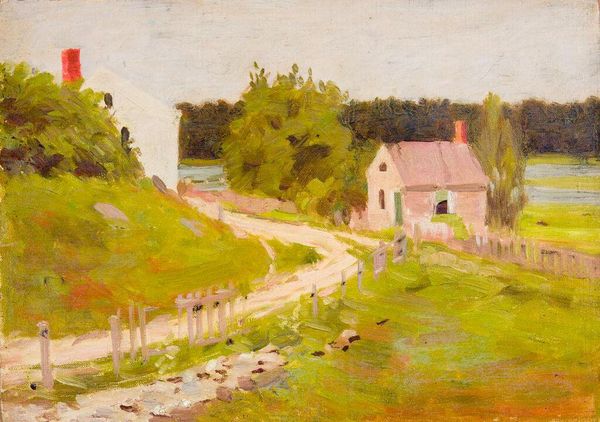
painting, oil-paint
#
tree
#
sky
#
art-nouveau
#
rural-area
#
painting
#
oil-paint
#
landscape
#
house
#
oil painting
#
forest
#
geometric
#
expressionism
#
natural-landscape
#
water
#
russian-avant-garde
#
cityscape
#
natural environment
#
modernism
#
expressionist
#
building
Copyright: Public domain
Curator: Before us is "Evening Landscape," painted in 1917 by Boris Kustodiev, using oil on canvas. Editor: Ah, that sky...it’s like spun gold bleeding into twilight. And that lonely tree, clawing at the light! Makes you wonder what silent dramas it has witnessed. Curator: Indeed. Kustodiev was deeply interested in the Russian landscape, and in portraying a sort of idealized, perhaps even longed-for vision of Russian provincial life during a time of great upheaval. You can sense the weight of history but also the resilience. Editor: Upheaval, yes. But I’m also noticing the clear division of labor even within this idyll – the peasants there seem to be relaxing at sundown after their labors in this rural economy. I can almost feel the texture of the roughspun fabric they must've woven or harvested nearby. It’s almost a textile worker’s gaze here, focused on who's using the land and benefitting. Curator: That's interesting. The artist wasn't just concerned with depicting the view, he crafted his vision very methodically, like a stage designer setting a scene. Notice how the tree anchors the composition? How your eye is drawn through this almost dreamlike world and its arrangement of fields and architecture to the small people, almost symbols themselves of simple joys and freedoms? Editor: True, and all made from ground pigments – think of the extraction processes involved to produce that vibrant red roof tile, the cost to the community. Kustodiev is part of the pre-revolution artistic elite. Does he consider those production implications while creating the landscape and figures for consumption by an art-viewing audience? Curator: It's easy to become swept away by the aesthetic, but to consider these social layers and embedded tensions certainly provides another depth of understanding of art of that era. The artist attempts to preserve a version of Russia rapidly vanishing through war and technological change, and he has created lasting beauty using earthy, and often exploited, resources. Editor: Precisely. Thank you for the experience; art making has never been separate from laboring for me. Curator: Nor should it be. It’s what gives this painting—and the memory of old Russia—its enduring, complex resonance.
Comments
No comments
Be the first to comment and join the conversation on the ultimate creative platform.
